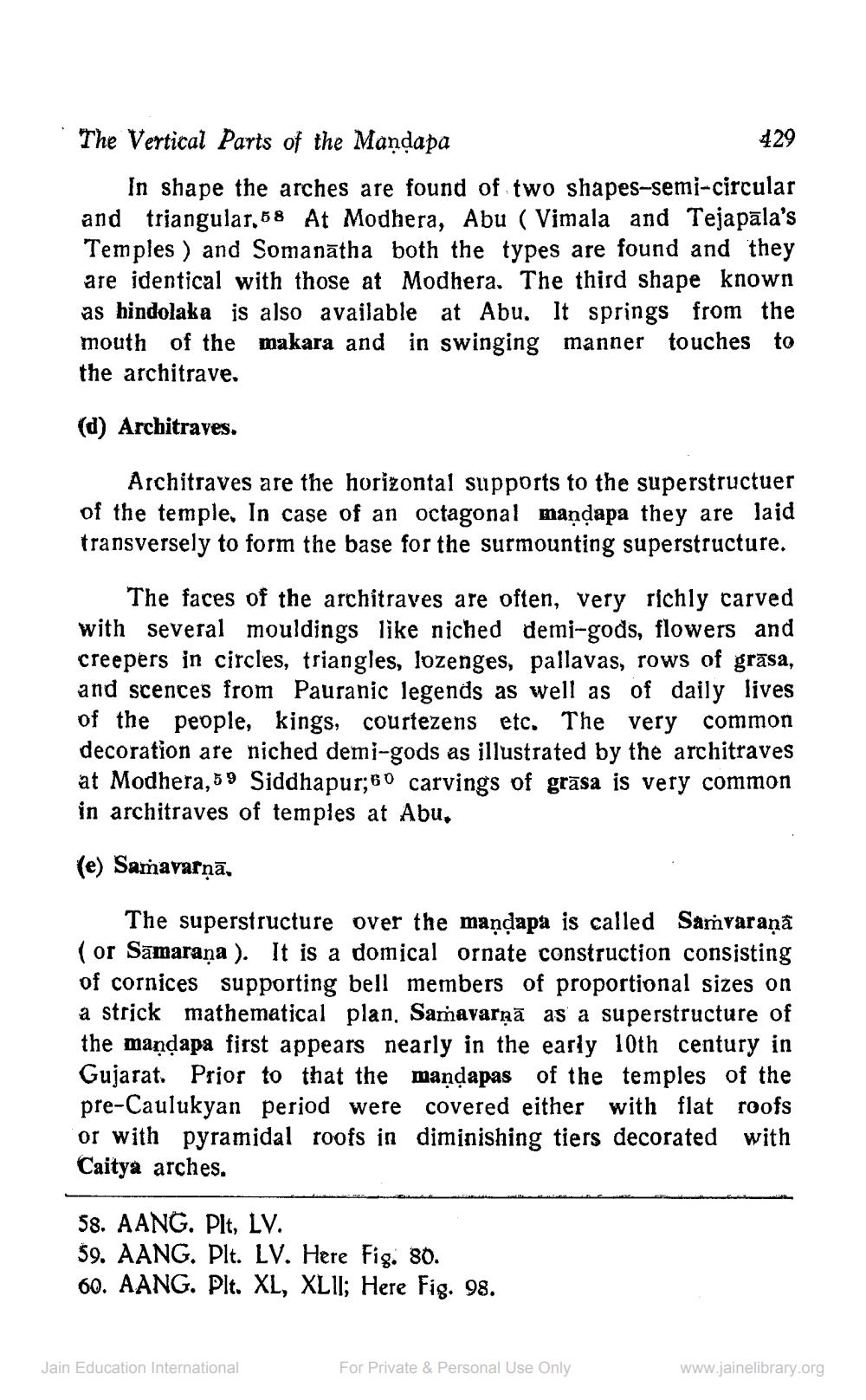________________
The Vertical Parts of the Mandapa
429 In shape the arches are found of two shapes-semi-circular and triangular,58 At Modhera, Abu ( Vimala and Tejapala's Temples ) and Somanātha both the types are found and they are identical with those at Modhera. The third shape known as bindolaka is also available at Abu. It springs from the mouth of the makara and in swinging manner touches to the architrave.
(d) Architraves.
Architraves are the horizontal supports to the superstructuer of the temple. In case of an octagonal mandapa they are laid transversely to form the base for the surmounting superstructure.
The faces of the architraves are often, very richly carved with several mouldings like niched demi-gods, flowers and creepers in circles, triangles, lozenges, pallavas, rows of grāsa, and scences from Pauranic legends as well as of daily lives of the people, kings, courtezens etc. The very common decoration are niched demi-gods as illustrated by the architraves at Modhera, 59 Siddhapur;60 carvings of grāsa is very common in architraves of temples at Abu.
(e) Samavarņā.
The superstructure over the maņdapa is called Samvaraņā (or Samarana ). It is a domical ornate construction consisting of cornices supporting bell members of proportional sizes on a strick mathematical plan. Samavarņā as a superstructure of the maņdapa first appears nearly in the early 10th century in Gujarat. Prior to that the maņdapas of the temples of the pre-Caulukyan period were covered either with flat roofs or with pyramidal roofs in diminishing tiers decorated with Caitya arches.
58. AANG. Plt, LV. 59. AANG. Plt. LV. Here Fig. 30. 60. AANG. Plt. XL, XLII; Here Fig. 98.
Jain Education International
For Private & Personal Use Only
www.jainelibrary.org




